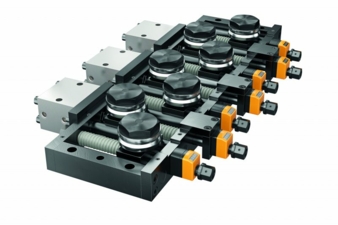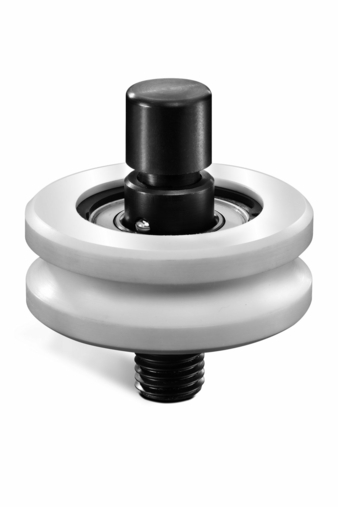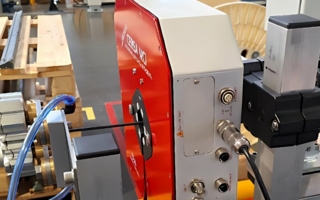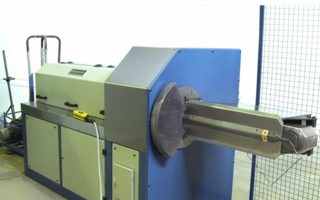07/06/2022 – Wire straightening
Pure power density
Regardless of whether the focus is on the processing of rolled wire, reinforced steel wire, cold heading wire or spring steel wire, if the geometric and mechanical parameters of an individual wire as well as the parameters of the straightener or the straightening machine are known, the forces and moments occurring during straightening can be calculated with good approximation.
At the interfaces between the straightening rollers and the wire, reaction or process forces are generated which are due to the bending moment present in the process material during deformation. Relevant process forces in straightening are the straightening forces and tensile forces. The straightening forces act in different directions and magnitudes depending on the geometric boundary conditions.
They correlate with the tensile forces which, influenced by the boundary conditions, occur as forward tensile force or transport force and backward tensile force. To achieve a high finished product quality, it is advantageous to ensure as constant a transport force as possible directly in the vicinity of processing or machining.
The most important straightening force on a bending straightening roller for the design and use of a straightener or straightening machine is the radial straightening force, which results from the reaction forces at each interface between straightening roller and wire. Each straightening roller has to withstand the straightening force and the straightening force influences the pressure between straightening material and straightening roller. The pressure is significantly influenced by the roller pitch (distance between the straightening rollers), the roller material and the roller groove geometry. To ensure the specified quality criteria, the aim should be to keep the pressure as low as possible.
Calculations show that the roller spacing is indirectly proportional to the straightening force. Assuming the selection of a straightener or a straightening machine with optimized roller spacing, the straightening force can be reduced by about 45 %. Well-flattening roller materials and roller grooves that are well adapted to the individual wire diameter in each case contribute to a further reduction in compression and longitudinal residual stresses.
For large wire diameters there are sometimes straightening forces of more than 100 kN per straightening roller. A simple mechanism for the individual adjustment of straightening rollers under this load is possible and available. A compact and affordable quick-opening/closing mechanism working against all straightening rollers and using only the muscular power of the operator is not, however.
Therefore, it was considered impossible to implement the following features for processing large wire diameters in one design:
–Individual adjustable straightening rollers to ensure an identical zero line for different wire diameters and for a collision-free wire path between the first and second straightening plane.
– Mechanical positions indicators PO for the defined and reproducible adjustment of the straightening rollers.
– Quick opening/closing mechanism.
– Compact, simple and reasonable.
Witels-Albert has solved this conflict and offers a total of 9 straightening machines for the processing of wires with a total diameter range from 9 mm to 40 mm. Depending on the application area and wire properties, models with 5, 7 or 9 straightening rollers can be selected.
All these “RA H PO” straightening machines come ex works with hydraulic cylinders for the quick opening/closing mechanism and with straightening rollers of the “WR” series. Depending on the application, the wire material, the yield point of the wire and/or the wire speed, it can be useful to use rollers of the “GB SL” series on straightening machines “RA H PO” series. These high-performance straightening rollers have special bearings, a fully hardened sleeve made of a very wear-resistant steel material and they can be re-greased.
In case rollers of the “WR” series are mounted on a “RA H PO” straightening machine, the standard screw bolts can be replaced by the so called “WR FT” screw bolts. The “WR FT” roller changing system was developed to reduce the time and effort required to replace straightening rollers and thus to optimize the operational procedures related to this process. By simply pressing on a tactile element integrated into the roller axis it is possible to remove a straightening roller and fit a different one very quickly and without using any tools. The “WR FT” roller changing system can also be retrofitted and is suitable for straightening rollers that have an external diameter of up to 110mm.
wire 2022, hall 9 booth E 39
Witels-Albert GmbH
Malteserstrasse 151-159, 12277 Berlin, Germany
Contact person is Marcus Paech
Tel.: +49 30 72398811
paech@witels-albert.com
www.witels-albert.com





